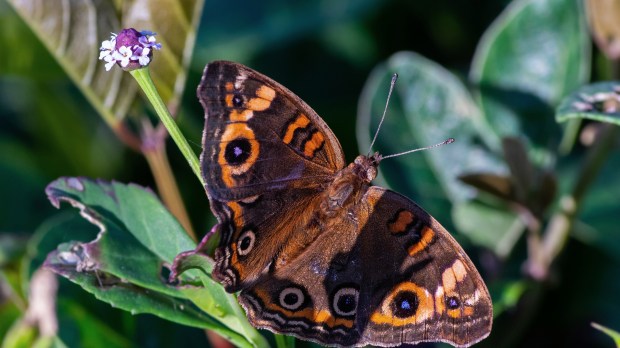Sauron, the dark lord from J.R.R. Tolkien’s epic fantasy world of Middle-earth, stands as one of the most iconic and menacing figures in literature. As a central antagonist in The Lord of the Rings, Sauron embodies evil – he is a malevolent force seeking dominion over all of Middle-earth. It is quite an unfitting name for a butterfly. And yet, that’s what a group of researchers decided to name a newly described butterfly – Saurona.
Once a powerful Maia (an angelic being in Tolkien’s mythology), Sauron fell from grace due to his unwavering desire for power and control – very much like the biblical Satan. With his eye as his most recognizable feature, Sauron cast his gaze upon Middle-earth, seeking to regain the One Ring that would allow him to bend all living creatures to his will. The striking wing patterns of these butterflies, their “distinctive fused orange rings” encircling black-and-white eyespots on the hindwings, led the researchers to name the genus Saurona, after Tolkien’s character.
Whereas Sauron’s character serves as a potent reminder of the destructive nature of unchecked ambition and the resilience of those who fight against tyranny, the discovery of these butterflies highlights the vastness of Earth’s biodiversity – and the many marvels of creation that scientists have yet to document.
“What this paper shows is that there are just hundreds and hundreds of species that we don’t know yet, that haven’t been named,” Robert Robbins, research entomologist and curator of lepidoptera at the Smithsonian National Museum of Natural History, told ABC’s KaKe. “This paper takes a very difficult and large group of butterflies, and they just amassed an immense amount of DNA information over the years and just brought it all together.”
You can read the paper, as published by the Royal Entomological Society, here.


